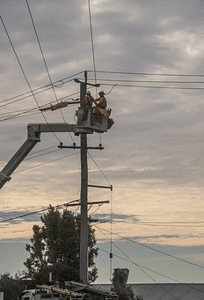You've made it through the storm and the power has been restored. But you're not out of the woods yet. Now is the time to take a moment to inspect and assess. The most common cause of power outages is weather-related. If this is the case, you'll want to evaluate any damage to your home from the storm. You'll also want to investigate any potential danger like downed trees or standing water. Get your home back in order after a power outage with these suggestions.
- Food Safety- How long is too long to leave perishable food? Remember the old adage, "When in doubt, throw it out". If food has been exposed to temperatures above 40º for over 2 hours, throw it out. A refrigerator will keep food cold for 48 hours, just make sure to keep the door closed while the power is out. If food in the freezer still has ice crystals, it can be refrozen. If not, cook the food, especially meat right away if it has begun to thaw.
- Appliances and Devices- Charge your mobile devices and plug in anything that you disconnected before the outage to reduce surge risk. Reset clocks and turn essential appliances back on first. Slowly add those that are less important to reduce the load on the electrical system all at once.
- Evaluate your surroundings- Rain and wind go hand in hand with a power outage. Look for downed trees and damage to your home's exterior. Don't forget to check on your neighbors, especially the elderly. Check the basement for standing water. Many homes have an electric sump pump, if you do not have a battery-powered back-up, basement flooding is likely. Do not enter a room with standing water unless you are sure the electricity is off to avoid electrical shock. Do not use electrical equipment on a wet carpet or flooring. If you find water damage, follow these steps: How to Deal with Water Damage
- Emergency items- Extinguish all candles and kerosene lamps to avoid fire damage. Replace any items you may have used from your emergency kit, including batteries, first aid, candles, and food.
- Generators- If you used a generator during the power outage, drain the old fuel and let the generator fully cool before storing it. Stale fuel will clog the carburetor if the equipment is not used within 2 weeks. You can also use a stabilizer in the fuel to prevent corrosion, rather than draining it. Store the generator in a cool, dry place.
We hope you find these tips useful for getting your home back in order after a power outage. For more information on what to do during emergencies, visit ready.gov. If you need help with water damage restoration, we can help! Contact us at (800) 865-5157, 24/7/365



